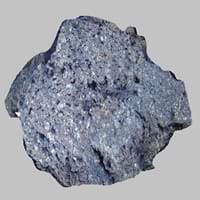Definition
Mugearite is a type of oligoclase bearing basalt, also comprising of olivine, apatite, and opaque oxides
Peridotite is a dense, coarse-grained plutonic is the main constituent of the earth's mantle
Origin
Skye, Scotland
Pike County, U.S
Discoverer
Alfred Harker
Unknown
Etymology
From mugear + -ite
From French, from peridot + -ite
Class
Igneous Rocks
Igneous Rocks
Sub-Class
Durable Rock, Medium Hardness Rock
Durable Rock, Medium Hardness Rock
Other Categories
Opaque Rock
Coarse Grained Rock, Opaque Rock
Texture
Glassy, Massive, Porphyritic, Scoriaceous, Vesicular
Phaneritic
Color
Black, Brown, Light to Dark Grey
Dark Greenish - Grey
Durability
Durable
Durable
Scratch Resistant
Yes
Yes
Appearance
Dull and Soft
Rough and Shiny
Interior Uses
Floor Tiles, Flooring, Homes, Hotels
Decorative Aggregates, Interior Decoration
Exterior Uses
As Building Stone, Garden Decoration
As Building Stone, As Facing Stone, Garden Decoration
Other Architectural Uses
Curbing
Curbing
Construction Industry
As Dimension Stone, Cobblestones, Rail Track Ballast, Roadstone
As Dimension Stone, Cobblestones
Medical Industry
Not Yet Used
Not Yet Used
Antiquity Uses
Artifacts, Monuments, Sculpture
Monuments, Sculpture, Small Figurines
Commercial Uses
Creating Artwork
Creating Artwork, Gemstone, Jewelry, Source of Chromite, Platinum, Nickel and Garnet, Source of Diamonds
Types
Alkaline Basalt, Boninite, High Alumina Basalt, Mid Ocean Ridge Basalt (MORB), Tholeiitic Basalt, Basaltic trachyandesite, Mugearite and Shoshonite
Dunite, Wehrlite, Harzburgite, Lherzolite and Pyrolite
Features
Has High structural resistance against erosion and climate, Very fine grained rock
Constitutes upper part of the Earth's mantle, Generally rough to touch, Host rock for Diamond, Is one of the oldest rock
Archaeological Significance
Famous Monuments
Data Not Available
Data Not Available
Famous Sculptures
Data Not Available
Data Not Available
Formation
Mugearite forms when lava reaches the Earth's surface near an active volcano. The temperature of lava is between 1100 to 1250° C when it gets to the surface.
Peridotites can be formed in two ways: as mantle rocks formed during the accretion and differentiation of the Earth or as cumulate rocks formed by precipitation of olivine and pyroxenes from basaltic magmas.
Mineral Content
Olivine, Plagioclase, Pyroxene
Amphibole, Chromite, Garnet, Magnesium, Olivine, Phlogopite, Plagioclase, Pyroxene
Compound Content
Aluminium Oxide, CaO, Iron(III) Oxide, FeO, Potassium Oxide, MgO, MnO, Sodium Oxide, Phosphorus Pentoxide, Silicon Dioxide, Titanium Dioxide
Ca, Fe, Mg, Potassium, Silicon Dioxide, Sodium, Titanium Dioxide
Types of Metamorphism
Burial Metamorphism, Impact Metamorphism
Burial Metamorphism, Cataclastic Metamorphism, Contact Metamorphism, Hydrothermal Metamorphism, Impact Metamorphism, Regional Metamorphism
Types of Weathering
Biological Weathering, Chemical Weathering
Biological Weathering, Chemical Weathering, Mechanical Weathering
Types of Erosion
Not Applicable
Chemical Erosion
Grain Size
Not Applicable
Coarse Grained
Fracture
Conchoidal
Irregular
Streak
White to Grey
White
Porosity
Less Porous
Less Porous
Luster
Not Available
Shiny
Cleavage
Not Applicable
Imperfect
Specific Gravity
2.8-3
3-3.01
Transparency
Opaque
Translucent to Opaque
Density
2.9-3.1 g/cm3
3.1-3.4 g/cm3
Resistance
Heat Resistant, Pressure Resistant, Wear Resistant
Heat Resistant, Pressure Resistant, Wear Resistant
Deposits in Eastern Continents
Asia
India, Russia
China, India, Indonesia, Kazakhstan, Russia, South Korea, Thailand, Turkey
Africa
South Africa
Morocco, South Africa
Europe
Iceland
Finland, France, Georgia, Germany, Great Britain, Italy, Kazakhstan, Netherlands, Norway, Spain, Switzerland, Venezuela
Others
Not Yet Found
Not Yet Found
Deposits in Western Continents
North America
Canada, USA
Canada, USA
South America
Brazil
Brazil
Deposits in Oceania Continent
Australia
Not Yet Found
New Zealand, Western Australia










